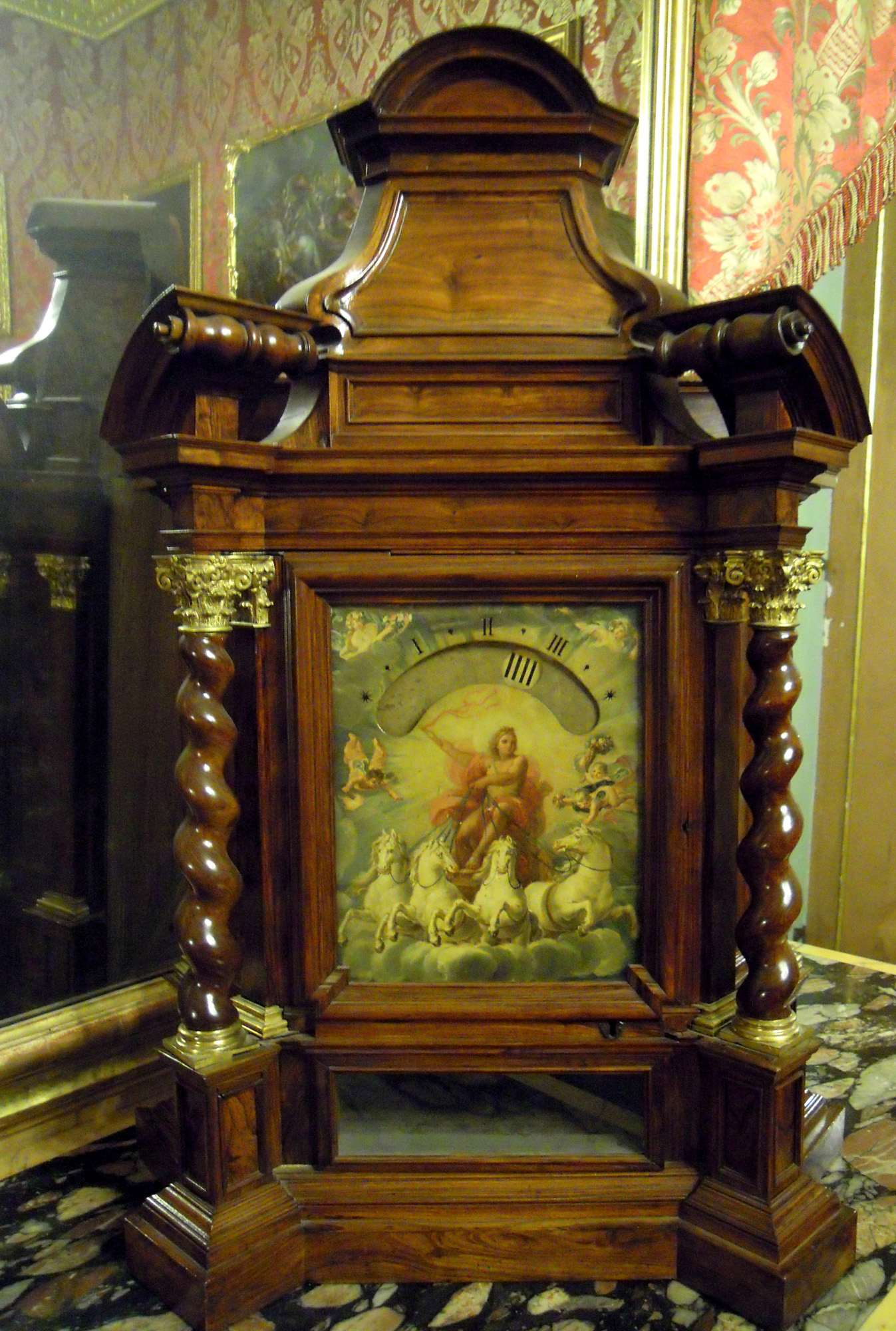Details
Night clock
Carved and turned wood, copper dial with a painting of Apollo and the Chariot of the Sun,Rome, second half of the 17th century
The Queen’s Bed Chamber
This is a rare example of a night clock, a device with a very particular origin. Pope Alexander VII (1655–67) suffered from insomnia and could not bear the ticking of a clock in his bedroom. He therefore commissioned the Campani brothers to create a silent clock that could be read also in the dead of night. The solution was a perforated dial lit from behind with a small oil lamp or candle. Pietro Tommaso Campani produced a prototype in 1656 and showed it to the Pope, who was so delighted that he issued a patent in his name. Such clocks were generally dark in colour, given their religious uses, made of ebony or other ebonized woods with polychromatic hardstone for items of particular prestige. The altar-like structure culminated in a pediment between volutes and presented a central panel of copper, often painted with scenes alluding to religious life or the passing of time and frequently flanked by decorative columns or pilaster strips.
- seconda metà del secolo XVII
- Legno intagliato e tornito, mostra in rame dipinta con Apollo e il carro del sole
- Camera da Letto della Regina


